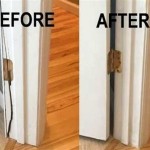```html
How To Detail Your Own Car Interior: A Comprehensive Guide
Maintaining a clean and well-detailed car interior extends beyond mere aesthetics; it contributes to a healthier and more enjoyable driving experience. Regular detailing prevents the accumulation of dust, allergens, and unpleasant odors, preserving the value and longevity of the vehicle. This comprehensive guide outlines the necessary steps and techniques to effectively detail a car's interior, suitable for both novice and experienced car owners seeking professional-level results.
Preparation: Gathering Supplies and Assessing the Interior
Before commencing the detailing process, gathering the necessary supplies and thoroughly assessing the interior's condition is crucial. This preliminary step ensures efficiency and prevents potential damage to sensitive surfaces.
Essential supplies include a high-powered vacuum cleaner with various attachments, such as a crevice tool and upholstery brush. Microfiber cloths are indispensable for wiping surfaces and applying cleaning solutions. A selection of interior cleaning products specifically designed for automotive use is required. These may include all-purpose cleaners, leather conditioners, fabric stain removers, and glass cleaners. Brushes of varying sizes and stiffness are useful for scrubbing carpets, upholstery, and vents. A detail brush, with its fine bristles, is particularly effective for reaching tight spaces and intricate details. Finally, a source of clean water and a bucket are necessary for rinsing and diluting cleaning solutions.
The assessment stage involves a careful inspection of the interior to identify areas requiring specific attention. Note the types of stains present on the upholstery and carpets, the condition of the leather or vinyl surfaces, and the level of dust accumulation in vents and crevices. This preliminary assessment will guide the selection of appropriate cleaning products and techniques.
The Cleaning Process: A Step-by-Step Approach
The cleaning process should proceed systematically, starting from the top of the interior and working downwards. This approach minimizes the risk of redepositing dirt and debris onto already cleaned surfaces.
Begin by removing all loose items from the car, including floor mats, personal belongings, and trash. This clear space will allow for more efficient cleaning. Thoroughly vacuum the entire interior, paying particular attention to carpets, upholstery, and crevices. Use the crevice tool to reach tight spaces between seats and along door panels. The upholstery brush can be used to loosen dirt and debris embedded in the fabric.
Next, address the dashboard, door panels, and console. Apply an all-purpose cleaner to a microfiber cloth and gently wipe these surfaces. Avoid spraying the cleaner directly onto the dashboard, as this may damage sensitive electronics. For areas with stubborn dirt or grime, use a detail brush to agitate the surface before wiping it clean. Pay attention to vents, which often accumulate dust and debris. Use a small brush or compressed air to remove the buildup.
Clean the windows and mirrors using a dedicated glass cleaner. Spray the cleaner onto a microfiber cloth and wipe the glass surfaces in a circular motion. Follow up with a dry microfiber cloth to remove any streaks. For heavily soiled windows, multiple applications may be necessary.
If the vehicle has leather upholstery, clean and condition the leather surfaces using a dedicated leather cleaner and conditioner. Apply the cleaner to a microfiber cloth and gently wipe the leather surfaces. Follow the manufacturer's instructions for application and buffing. The conditioner will help to moisturize the leather and prevent it from cracking.
The final step involves cleaning the carpets and upholstery. For minor stains, spot-clean the affected areas using a fabric stain remover. Apply the stain remover to a microfiber cloth and gently blot the stain. Avoid rubbing the stain, as this may spread it further. For heavily soiled carpets and upholstery, consider using a carpet cleaner or shampooer. Follow the manufacturer's instructions for operation and drying time.
Specific Area Considerations: Addressing Unique Challenges
Certain areas within a car's interior present unique cleaning challenges and require specialized techniques to effectively address them.
Floor Mats: Floor mats accumulate significant amounts of dirt and debris and require a thorough cleaning. Remove the floor mats from the car and shake them to remove loose dirt. Vacuum both sides of the mats. For rubber or vinyl mats, use an all-purpose cleaner and a scrub brush to remove stubborn dirt. For carpeted mats, use a carpet cleaner or shampooer. Allow the mats to dry completely before reinstalling them in the car.
Cup Holders: Cup holders are notorious for accumulating spills and sticky residue. Remove any removable cup holder inserts and wash them with soap and water. Use a detail brush to clean the inside of the cup holders, removing any dried-on residue. A cotton swab dipped in rubbing alcohol can be used to remove stubborn stains.
Steering Wheel: The steering wheel is a high-touch area that can accumulate dirt and bacteria. Clean the steering wheel with an all-purpose cleaner or leather cleaner, depending on the material. Use a microfiber cloth to wipe the surface thoroughly. Avoid using harsh chemicals that could damage the steering wheel.
Headliner: The headliner is a delicate surface that requires a gentle cleaning approach. Avoid using harsh chemicals or excessive moisture, as this can damage the fabric. Use a microfiber cloth dampened with a mild all-purpose cleaner to gently wipe the headliner. Avoid scrubbing the headliner, as this can cause the fabric to pill or sag.
Air Vents: Air vents can accumulate dust, pollen, and other allergens. Use a small brush, compressed air, or a vacuum cleaner with a crevice tool to remove the debris. Consider using an air vent cleaner to disinfect the vents and eliminate odors. A long, flexible cleaning brush specifically designed for air vents can also be highly effective.
Door Panels: Door panels accumulate dirt and grime from regular use. Clean the door panels with an all-purpose cleaner and a microfiber cloth. Pay attention to the door handles, armrests, and other high-touch areas. Use a detail brush to clean the crevices and trim.
Seat Belts: Seat belts can become soiled with dirt and body oils. Extend the seat belts fully and clean them with a mild all-purpose cleaner and a microfiber cloth. Avoid using harsh chemicals or abrasive cleaners, as this can damage the seat belt webbing. Allow the seat belts to dry completely before retracting them.
Following these steps ensures a comprehensive and effective detailing process, leaving the car's interior clean, fresh, and revitalized. Consistent maintenance, including regular vacuuming and spot cleaning, will help preserve the cleanliness and longevity of the interior.
```
How To Clean And Detail A Car Interior

How To Clean A Car Interior In 8 Simple Steps

How To Clean And Detail A Car Interior

Full Interior Car Detailing Deep Cleaning 169

How To Clean A Car Interior In 8 Simple Steps

How To Clean And Detail A Car Interior
Would You Pay An Extra 1 000 To Have A White Leather Interior In Your Tesla Electric Car Quora

Car Revs Daily Com 2024 Jaguar F Type S Coupe Options Exteriors And Interior Colors Detailed83

Car Wrapping Is The Flexible Way To Decorate Your Motors Blog

How To Your Car Carmax
Related Posts








